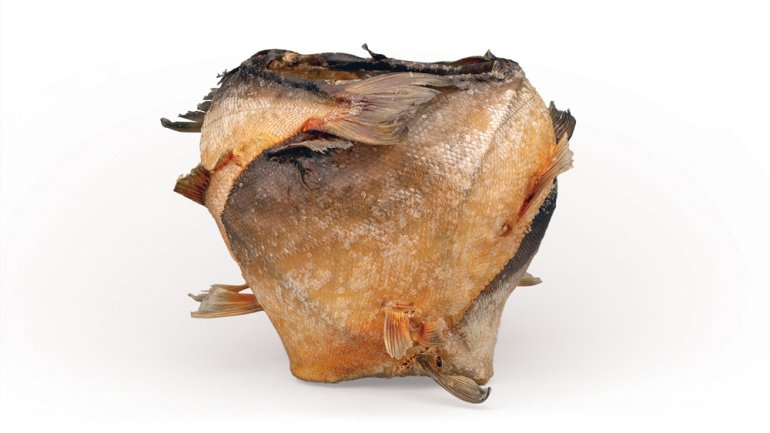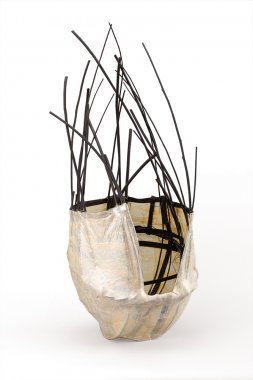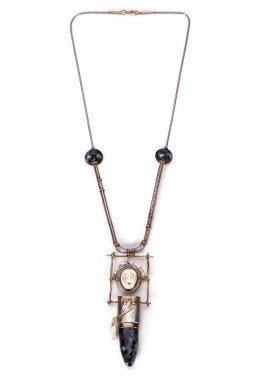From Nature
From Nature
Craft and nature have always intertwined; humans have transformed animals, minerals, and plants into art at least since the Stone Age.
Lena Vigna, Racine Art Museum’s curator of exhibitions, began to consider that ancient connection in a new light about five years ago, while gathering art for shows. Struck by how some artists use natural objects without altering them much – or at all – she realized that a show centered on such works could offer “a new lens for exploring the natural world.” So she set out to curate one.
“For this exhibition, I wanted work that would capture the imagination and give people new ways to see things that they may take for granted in their daily lives,” Vigna says, citing “the beauty of a stone’s surface, the structure of porcupine quills,” and even “the way hog gut can seem luminescent.”
RAM’s strong emphasis on craft made the task of putting the show together both easier and a bit trickier. The museum has an abundance of work made of natural materials – baskets, furniture, ceramics, and glass among them. Add to that the steady arrival of new works, and “there is a constant stream of inspiration,” Vigna says. But for this show, she had to narrow her focus, specifically seeking objects by artists who use natural elements more or less in their original state.
The result is a display of art jewelry, vessels, furniture, sculpture, and other works that, like nature itself, encompasses both the sublimely beautiful and the decidedly down-to-earth. Some pieces might incorporate rocks, shells, twigs, and feathers. Others are made with gut or fish skin, which several museum staff members initially found off-putting, Vigna says. “Their reactions were dramatic” – shuddering, grimacing – “and inadvertently became this great metaphor for how deeply connected organic bodies can be on a visceral level.”
Museum staff had to surmount some physical challenges, too. A 10-by-4-foot sculpture by Dorothy Gill Barnes had to be coaxed through the museum’s elevators and doorways. And because the show runs for more than six months and includes many fragile objects, a number of them will be swapped out about midway through, requiring lots of swift but careful moves.
Vigna finds “From Nature” compelling on visual, textural, and philosophical levels. Feathers in the works of Arline Fisch, Michael Bailot, and Doug Stock, for instance, might be experienced simply as opulent flourishes, or they might function as a reminder of the historical, cultural, and biological links between humans and birds.
“It feels somewhat idealistic, but also very necessary, to encourage people to take time to appreciate the environment and what it offers: renewal, spontaneity, shelter, contemplation,” Vigna says. “It’s an opportunity for visitors to engage with different viewpoints, perspectives, and modes of making. And it’s a reminder that nature unifies people over time and place.”






